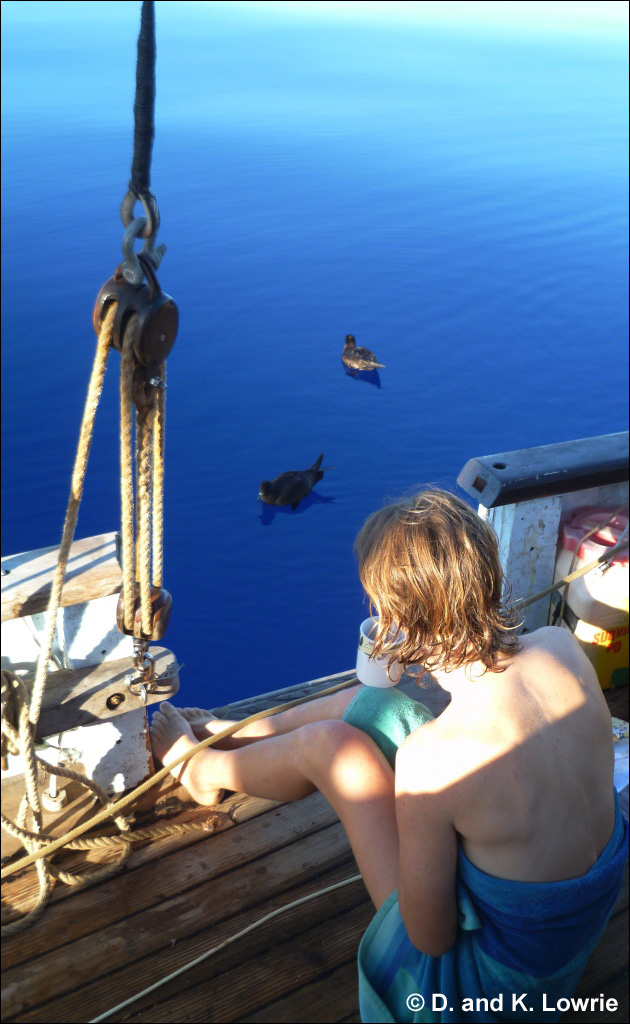 |
| Breakfast with Westland Petrels, becalmed, Pacific |
From watching dolphins leaping at the bow, seeking companionship from a banking shearwater during lonely ocean watchers or flushing hundreds of tiny sparkling plankton down the loo(!), sailors are overwhelmingly in tune with the natural world.
Like our fellow amphibians, we have adapted to life on land and in the water, just with a few more contraptions to keep us afloat! Sails power us, wind turbines swish, solar panels bristle and wake turbines spin, providing green energy for our lights, laptops, fridges or if you’ve a wooden boat like us, bilge pumps!
It is this usage of alternative energy and awareness of its consumption, down to the last amp, that holds us apart from many of our land-dwelling counterparts. Just as a gecko effortlessly merges with its surrounding, so the sailor can be seen collecting rain water, conserving water, sourcing locally and eating seasonally; it is as natural to her as living in a box the size of most people’s garden shed.
 |
| Red-footed booby on the bowsprit, Pacific |
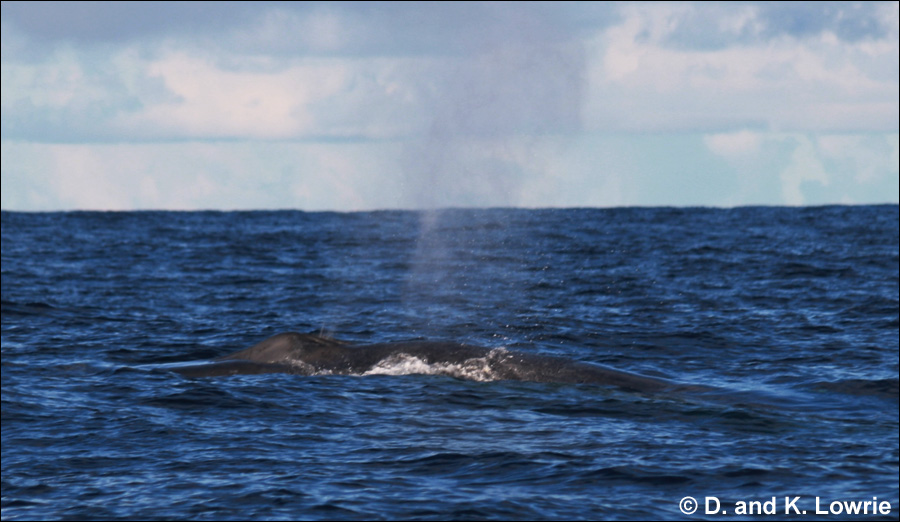 |
| Blue Whale, Pacific Ocean |
We live a privileged life in some of the most remote and wild places on earth. Tiny, shaken feather-balls seek shelter with us on their incredible migrations; flying fish screech onto our decks; a blue whale, one of the least known and largest animals ever to grace our planet, surfaces at our ‘front door’.
We are immersed in the lives of animals that others can only dream of.
But we mustn’t get complacent.
It’s easy to underestimate the impact of jettisoning a piece of rope, of the gurgle of the ‘iron top sail’ or that of anti-foul paint. The natural world, especially the vast ocean, can appear so limitless, bountiful and forgiving. It can be, but at the moment humanity is pushing Lovelock’s Gaia Theory to the limit. The repetitive death knells of: overfishing, pollution, over-population, coral bleaching and climate change hammer remorselessly at our planet, our life support system.
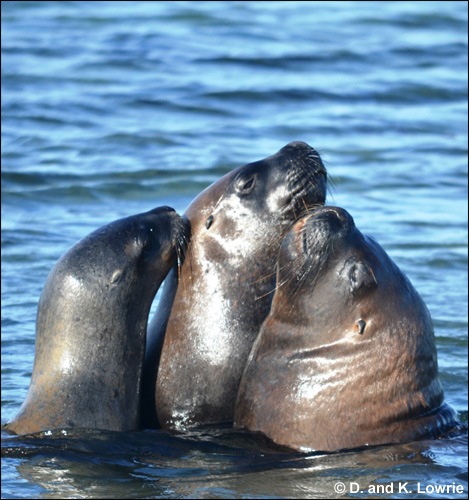 |
| South American sealions |
In our unique positions sleeping within a few centimetres of a passing hammer-head shark or giant squid, we can lead the way. We are the Queens of our mini floating worlds, regulating inputs and outputs, far and above that which a land-lover could dream to achieve.
Together we can reconnect our blue-green umbilical cord and ensure that the passion and inspiration ignited by our magical world is shared with others and serves to conserve our wild home forever.
I have always been transfixed by the natural world. Whether perched on a branch watching the canopy commotion as a bird of prey soars through or waiting under the roof of a million stars for whiskered bats to emerge from their roost. But it was not until nearly four years ago when we set sail that I started to meet and understand the other 70% of our planet.
Since then we have been trying to work out how to leave as tiny a blue print as possible. I find it challenging and extremely satisfying. I’m sure many of you will be following similar principles and I would love to hear more ideas. Because I believe together we CAN make a difference, can ENJOY the ‘greening’ process and most of all the wildlife and wild places we’re supporting.
“There is no pillow so soft as a clear conscience”.
~French Proverb
Below are some of the things we do to sustain as blue-green a life as possible:
- Buy products with as little packaging as possible.

Home Made Preserves, Chile I have an allergy to plastic bags (!) and carry rucksacks and egg boxes for provisioning. We preserve our own fruit, meat and veg to cut back on cans.
- Reuse, recycle and sort waste. I dig organic waste into a hole on land or jettison it at sea when on passage. We believe that if waste comes from the land it should go back there if at all possible.
- We conducted a rubbish experiment, hoarding all our no non-organic waste for 10 months. This included stuffing five pillows with all our old bits of old rope ends, thread and material. It’s amazing how focused one becomes on packaging, when you know you have to stare at it for another 10 months! It also becomes weirdly therapeutic…
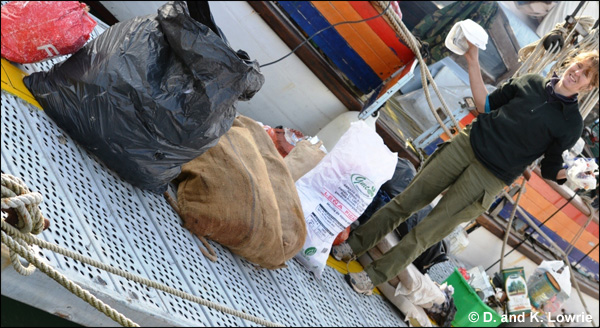
10 Month Rubbish Experiment, Chile - We buy local and seasonal food. We consider how products are made and how they reached the shelves. This can on occasion hemorrhage decisions, but most of the time it’s liberating and suits my controlling nature!
- We don’t eat fish or seafood unless there is evidence that stocks are healthy. If you haven’t time to research the topic read, The End of the Line: How Overfishing Is Changing the World and What We Eat,
by Charles Clover, it’s a fantastic piece of investigative journalism. Unfortunately, a bustling fish market is not necessary the sign of a thriving fishery. Blue-finned tuna, Atlantic cod, Atlantic salmon, shark, marlin, monk fish, shrimps, prawns, lobster and swordfish are amongst the many imperiled species.See:
www.fishonline.org
www.fishwatch.gov
www.greenpeace.org.uk/oceans/what-you-can-do/better-buys-what-fish-can-I-eat
- Cleaning:
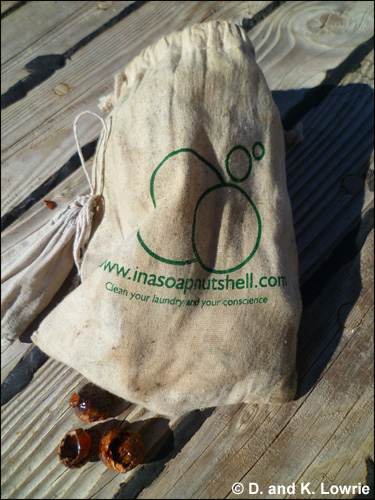
Soapnuts in organic cotton bag I use Ecover which can be found in the UK, Canary Islands, USA etc. and Seventh Generation which I found in St. Maarten, or better still vinegar and lemon (to cut back on packaging), also organic soap and shampoo (I’ve found organic olive-based products in the French Caribbean).
Soapnuts are little gems for laundry. They’re totally organic, not the rightest of results, but the fish are happier! Friends know to bring these beauties with them when they visit, although you need such tiny amounts, they last for ages.
- I use a ‘moon cup’ during menstruation, so nothing’s thrown in the bin and it’s very cost effective. We haven’t had children yet, but I would love to hear from parents who’ve used cloth nappies.
- We’ve tried various anti-foul alternative treatments such as chili in paint, but with the fear of ship worm ever stalking us, I’m afraid we still use hard anti-foul paint. I’m not an expert on anti-fouling and would love to hear if anyone has found ‘greener’ alternatives. This is the bane of our wooden boat life. We collect the hard paint debris as best as we can when re-painting the hull, but no doubt this highly toxic substance gets into the environment and into us.
- Fuel: we use the engine as little as possible, equating it to CO2, stinking fumes and noise. Some of our most treasured days at sea have been sitting becalmed with our toes being pecked by seabirds!

Westland Petrel, becalmed, Pacific - We mend and re-use everything: when lowering the floor in our galley, we re-used all the wood and nails. We are very careful in selecting wood, using, for example, teak grown in agricultural plantations in Trinidad. I’d rather see a tree in a rainforest heaving with wildlife than dead on our boat.
- We avoid petroleum-based products where possible using, for example, linseed oil and Varnol (pine tree resin-based product) on the exterior wood. No product is perfect: e.g. linseed oil is often produced through intensive agriculture, so it’s often a case of choosing the best of a bad bunch.
I look forward to hearing your ideas!
The 5000 Mile ProjectOn 27 July 2012, Katharine and her husband, David, will start running the length of South America, over 5000 miles, the equivalent of 200 marathons, unsupported, in a year.
Their goals are to:
If you would like to sponsor their expedition or donate to their wildlife charities, please:
|
About Katharine Lowrie
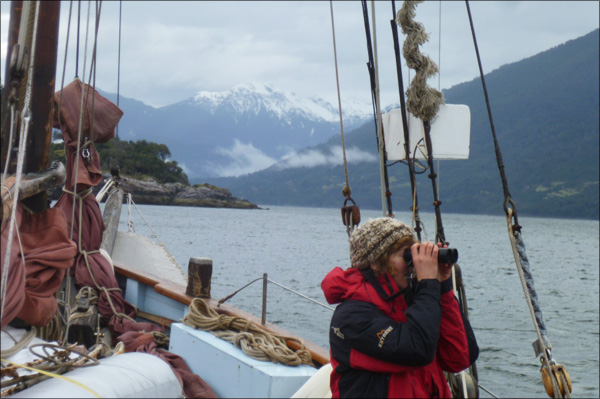 |
| Katharine Lowrie surveying in Reloncavi, Chile |
Katharine is an ecologist and currently lives with her husband David in Uruguay on their 77-year-old wooden gaff-ketch.
 They surveyed the breeding seabirds of the Eastern Caribbean between 2009 and 2010 and recently published, The Seabird Breeding Atlas of the Lesser Antilles, with Environmental Protection In the Caribbean (EPIC), available from Create Space and Amazon.com.
They surveyed the breeding seabirds of the Eastern Caribbean between 2009 and 2010 and recently published, The Seabird Breeding Atlas of the Lesser Antilles, with Environmental Protection In the Caribbean (EPIC), available from Create Space and Amazon.com.
After leaving the Caribbean, they sailed to the Galapagos, Easter Island and Chile where they lived for nearly a year, including sailing south through the Patagonian canals and the Beagle Channel. They then sailed to the Falklands and Uruguay — experiencing some of the worst weather of their entire journey! (www.listalight.co.uk).
Read also on this website
- Katharine Lowrie sets sail to protect wildlife, by Katharine Lowrie
- Fear and Reward, by Katharine Lowrie
- What to do with all that trash, by Devi Sharp
More information (external links)
- Lovelock’s Gaia Theory: Model and Metaphor for the 21st Century:
- The End of the Line: How Overfishing Is Changing the World and What We Eat,
by Charles Clover
- The buyer’s guide to sustainable seafood (Marine Conservation Society, UK)
- Fish Watch: US Seafood Facts
- Sustainable seafood: what fish can I eat? (Greenpeace website)
- Ecover (Ecological cleaning products)
- Seventh Generation (Green cleaning products)
- 1001 Uses of White Distilled Vinegar
- Lemons, a natural household cleaner
- Using Soapnut shells for your laundry
- ‘Moon cup’ (Sanitary protection)
How do you leave a ‘small blue print’?
Let us know.
Email kathy@forcruisers.com or leave a comment below.



